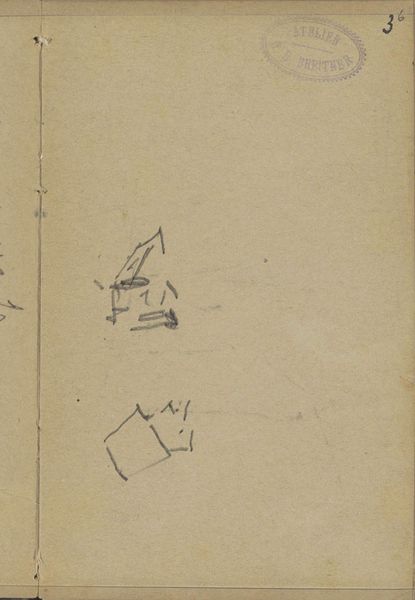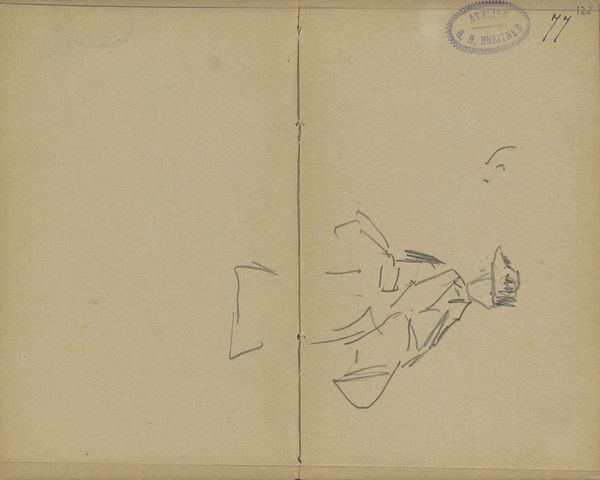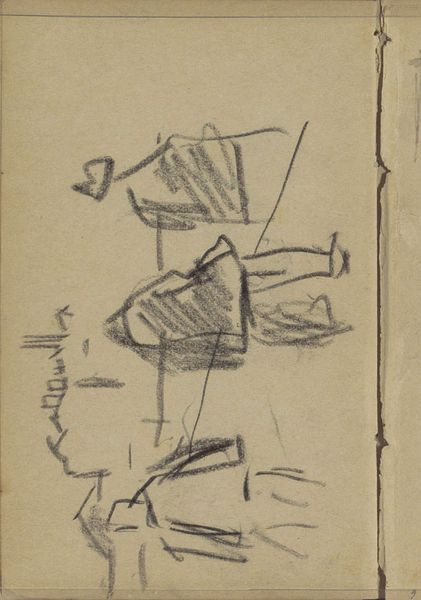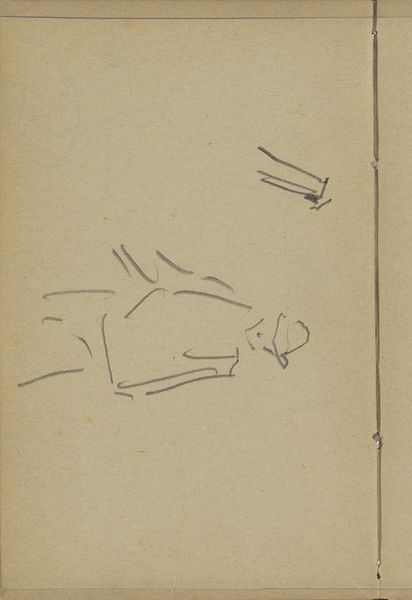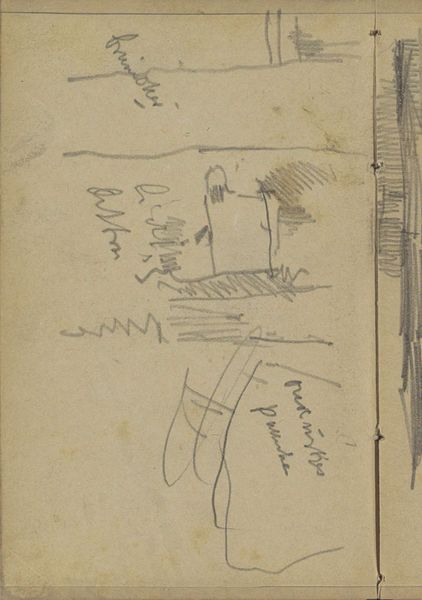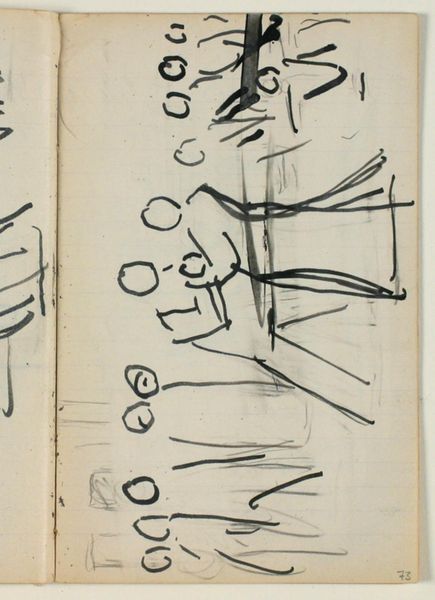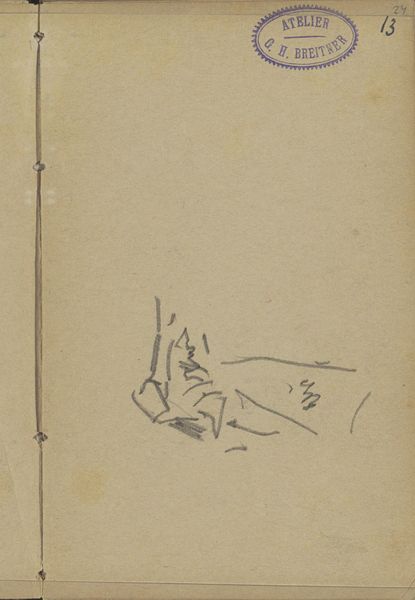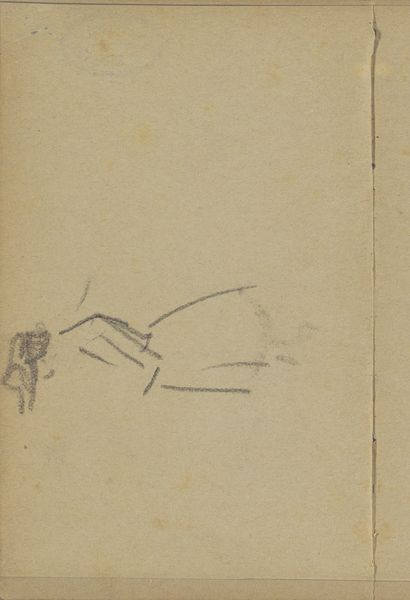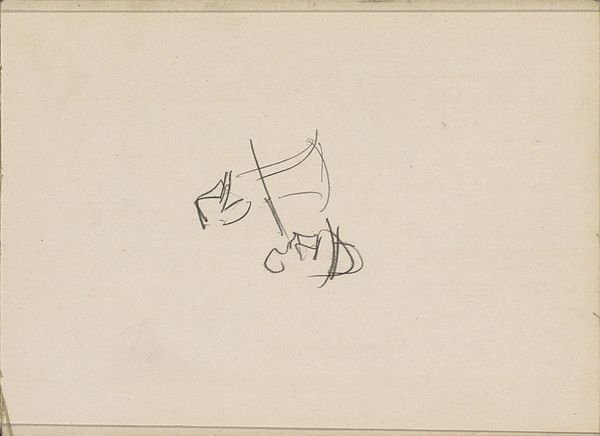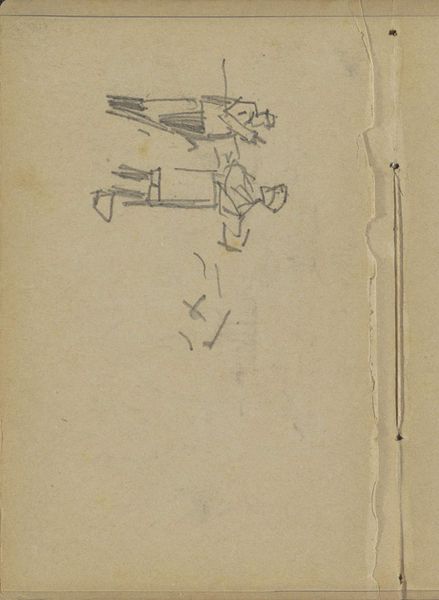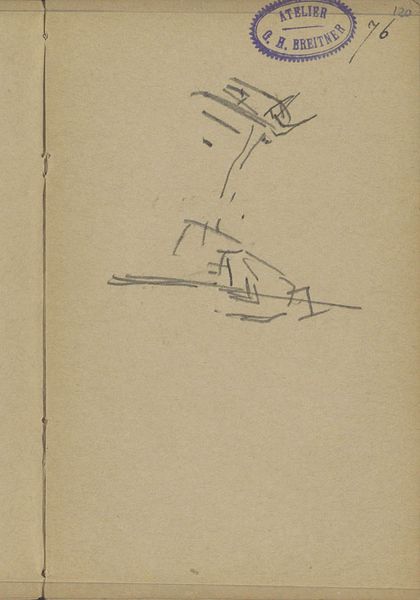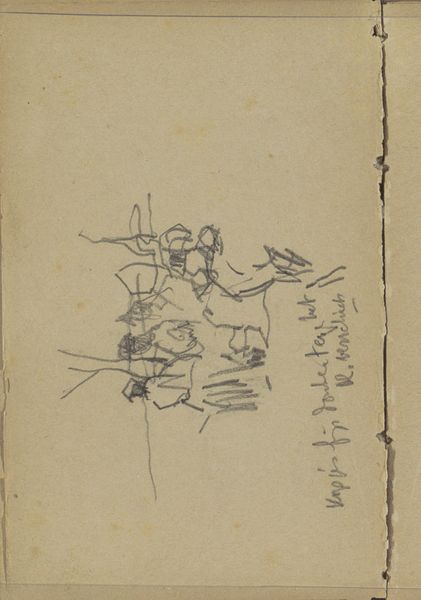
drawing, pencil
#
portrait
#
drawing
#
impressionism
#
pencil
Copyright: Rijks Museum: Open Domain
Curator: This drawing is titled "Two Women," by George Hendrik Breitner, created sometime between 1887 and 1891. It's rendered in pencil. Editor: My first impression is that it’s a study, immediate and unfussy, hinting at something without revealing everything. Almost ephemeral. Curator: Indeed, Breitner was known for capturing fleeting moments, much in line with Impressionist principles. Notice how he used a quick, sketch-like technique? He prioritizes capturing an impression over detailed realism. It seems like it might represent a psychological interest in how quickly appearances can shift. Editor: The roughness definitely resonates. Look at the paper itself – you can see the age, the texture. That tangible quality is important. It reveals that this wasn't conceived as high art in its own right but rather produced in the social context of the studio, almost industrial in approach. Curator: It's fascinating how he’s captured these women in an almost symbolic pose. We don’t have specific context, yet there is an unmistakable sense of intimacy in the suggestion of their being close together. It feels significant to have an impression captured, something meant for remembrance. Editor: For me, it underscores the labor inherent in artistic practice. Each line signifies a decision, a gesture, material used— labor of the artist rendered permanent by use of pencil and drawing material, yet it captures the women within specific societal constraints of dress and posture as well. The sketchiness almost demystifies artistic production by making visible process and material Curator: It makes me consider the meaning behind these repeated sketches in relation to his other portraits—do these images of two women act as the foundation for some larger study? Was it about more than an Impressionistic rendering of a specific day or series of gestures? Does it represent Breitner grappling with some deep idea about what women signify culturally, in Dutch society at this moment in time? Editor: By looking closely at the materiality of the work, its existence as a means to production as much as the social context it reveals— the position of women, how that era of art gets made— those things combined are key to this work's cultural resonance. Curator: Yes, looking at the context alongside the art expands it in ways that make looking at it feel more like historical study or excavation— there are so many things happening beneath what appears immediately obvious. Editor: Exactly, an insightful combination that is rewarding, beyond its initial appeal.
Comments
No comments
Be the first to comment and join the conversation on the ultimate creative platform.

